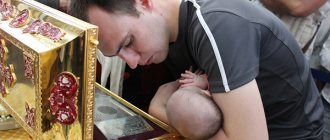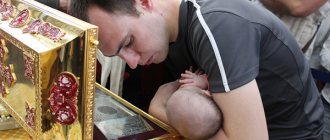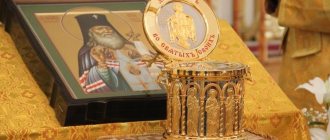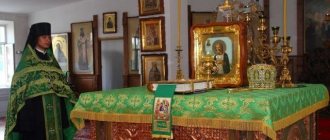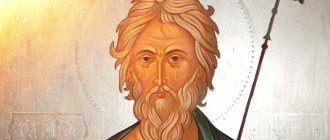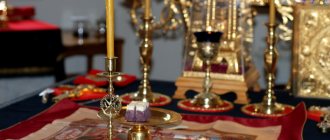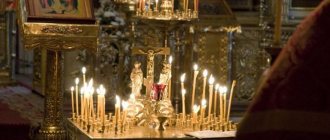Orthodox Life
Archpriest Vladimir Puchkov answers.
In reality, not all relics are incorruptible. Of course, the incorruptibility of the body is one of the criteria when collecting evidence for the canonization of a righteous person. However, this criterion is not the main one.
All the more remarkable, however, is the fact of the incorruptibility of the relics of individual saints, such as St. Spyridon of Trimifunt or St. Job of Pochaev. And there really are a lot of them. However, there are even more of those whose relics are only partially incorruptible, or even completely preserved in the form of individual bones. As has already been said, the incorruption of relics is not the main and not the only sign of a person’s holiness. Therefore, a saint remains a saint no matter what condition his body is in after death.
It is quite obvious that calling all the relics incorruptible, on the basis that they are all sacred, is wrong and unacceptable. Actually, the Church does not call all relics incorruptible, and never has called them. Of course, the relics of any saint are holy. However, only those relics that have not undergone decomposition since the death of the saint can be called incorruptible. Broadly and if desired, this concept can also be applied to those relics that have been partially preserved incorrupt, such as, for example, the relics of St. Alexander of Svir. But nothing more.
Anticipating the question: “Why does it happen that the bodies of some saints are completely incorruptible, while others have decayed to the bones?” - will explain. Holiness is a state that is achieved through a person’s faith, repentance and life according to the Gospel. But, since holiness is unattainable by any human effort, it is always a gift from God. And this gift is exclusively personal. The righteous person no longer receives other gifts of grace, which in our minds are often associated with holiness, no longer for himself. Known to us from the experience of communicating with righteous people, or even just from books, insight, eldership, the gift of healing and other gifts are given to the saint for the sake of those who can benefit from them. Open the biography of any of the saints of the last century, and you will see dozens of testimonies about healings of terminally ill people, miraculous warnings against actions fraught with tragic consequences, and prayerful help in hopeless situations. For the sake of all such witnesses, participants, healed, wise, repentant, gifts of grace are given to the righteous. The incorruptibility of the body is a phenomenon of a similar order. People go to the incorruptible relics, near them they are healed, repent, and gain faith. In this regard, the incorruptibility of the relics, for example, of the monks of the Kiev-Pechersk is quite understandable. But imagine that the saint labored in the desert for half his life, where he died. Either he died during the mass extermination of Christians somewhere in the now Muslim East, or he himself bequeathed not to give himself posthumous honors and leave the body somewhere in the impenetrable wilds. Or he lived in an area where there was no veneration of relics as such (and in the period of the 1st–5th centuries such existed). Does it make sense for the body of such a saint not to decay? Who will benefit from this and how? And what is the use of incorruptibility for the sake of incorruptibility, I admit, I don’t know myself.
The second factor that directly and extremely negatively affected the safety of the relics of many saints, oddly enough, is the jealousy of believers. Church people have always treated the relics of saints with reverent respect. And this had the worst impact on the safety of many relics. They were simply taken apart piece by piece. Moreover, there have been times in the history of the Church when interest in relics was literally widespread. You can imagine how many intact, preserved and possibly incorruptible relics at that time have not survived intact to this day only because the saint was known and revered. Don’t think, I have nothing against separating particles from the relics, especially since in some cases this is a necessity. Without particles of the relics of the martyrs, it is impossible, for example, to consecrate the throne or issue the antimension for the temple. But particles are different from particles. If in our time the attitude towards this is attentive and reverent, then in the 8th or 12th centuries hardly anyone separated particles from the relics by a hair. And again, if there is a clear meaning in the incorruptibility of the saint’s body, then what meaning there is in the incorruptibility of a single phalanx of his finger is unclear.
I think we can finish here. Let's finish where we started. Yes, not all relics are incorruptible, but, in spite of everything, any remains of a saint are holy relics. The attitude towards the shrine, as we well know, should be respectful and reverent, regardless of what is in front of us - an incorruptible body in a monumental shrine or a small bone in a reliquary on an icon.
“Anti-relics” – the bodies of the unrepentant
Relics are what the bodies of the righteous and saints are transformed into. But there are other cases - cases of the appearance of “anti-powers”, which God shows to people as a lesson and as an example of how an Orthodox person should not act.
The case of the phenomenon of “anti-relics” is described in his book “The Amber Chapter” by the Russian Orthodox writer Yuri Vorobyovsky. The writer, who visited Holy Mount Athos many times, tells in his book about the secrets of the Athos ossuaries - repositories of monastic remains.
On Mount Athos they do not bury people in the ground, as can be done in any other place. Here underfoot there is a stone, a rock, so the deceased monks are placed in graves carved out of the stone, and then after three years the graves are opened and the white bones of the ascetics are carefully transferred to the ossuary, where the remains of the prayer books await the resurrection. There is a sure sign - if the head of a deceased monk is honey-amber in color, it means that the monk has become a Saint. It is known that neither the remains of saints nor the remains of simple monks smell of decay. There is something similar in Russia - in the Pskov-Pechersk Lavra, where the bodies of monks are buried in caves, and where they all await the Second Coming of the Messiah and the resurrection. There is no smell of decay in the caves. But sometimes “anti-powers” are shown to monks - as a lesson and edification.
Such a case occurred in the 13th century under the Byzantine emperor Michael Palaiologos, when another attempt at union took place - the unification of the Orthodox Church and Catholicism, which also affected Athos. The writer points out that the arrival of Catholics to the Holy Mountain has always been associated with violence - there is Mount Gallows, on which Catholics hanged Orthodox monks who did not agree to go over to the heretics, and in the Bulgarian Zograf Monastery there is an icon on which Catholics burn a tower with 26 Bulgarian Orthodox Christians monks. There is also a tower remaining from the old Xiropotamus monastery.
According to the legend preserved on Mount Athos, at the moment when Catholics and Orthodox monks who agreed to serve together in the monastery, a great earthquake occurred and the monastery slid into the sea. Emperor Michael, who was present, almost died.
A similar case of joint service occurred in the Great Athonite Lavra of St. Athanasius, where three Orthodox hieromonks agreed to pray together with Catholics. It ended pitifully: they died without repenting of their sin, were buried, and when three years later the graves were opened, it turned out that the bodies of the hieromonks who had served the Catholics were undecomposed, stinking, black mummies. They tried to rebury the monks for another three years, to “pray off”, but it turned out that this was impossible - after a few years the monks gave up and took the “anti-relics” to a remote cave, where they still stand.
In the 21st century, one of the curious monks decided to visit the cave, but came out half gray. As it turned out, the mummies even retained their bulging eyes, hair and nails continued to grow for 700 years, and the cave still smelled of decomposition. But the monk turned gray not because of this, but because of the feeling of the presence of terrible evil, which is why he ran away from the cave. He said that next to the “anti-relics” he heard the voices of demons tormenting the souls of apostates, and felt that “some kind of dead life of its own” was flowing there.
A drawing from nature of the terrifying “anti-relics” was first published in the Greek newspaper “Bulletin of Orthodoxy” by the monk Severian from the newly rebuilt monastery of Xiropotamus. This image appeared in the publication “The Double-Edged Sword” and in the book of the Corinthian bishop Callistus.
In 1964, Hieromonk Gabriel, confessor of the Iveron cell of the Nativity of the Venerable Forerunner and Baptist of the Lord John, saw the anti-relics. They were specially shown to him by his spiritual mentor, the elder of the Lavra, Meletius. They were in a cave in a hard-to-reach place on a steep cliff and stood leaning against the wall. Their faces were coal black, and their hair was completely gray. Hieromonk Gabriel did not feel fear and examined them “carefully,” but after the examination he could not eat for several days and lost sleep for a long time. Theologians believe that the appearance of such “anti-powers” to the Orthodox should become an object lesson for those who are inclined towards heretical teachings themselves or who incline other people to them.
One of the most revered Orthodox saints
Saint Matrona, or as they prefer to call her, Matronushka . She was a poor peasant woman , also blind, but very deeply religious.
When she turned to the Lord, many miracles of healing occurred through her prayer. Even during her lifetime, crowds of people flocked to her. She also showed the gift of prediction. Matrona spent most of her life sitting. Even when she was sick, she did not stop accepting people until her death.
- Today, the remains of Matrona are kept in the Moscow Orthodox monastery. Because of this, the territory of the monastery is never empty. People constantly come from all parts of the country, creating long queues. They want to touch Saint Matrona and ask her for her many needs.
- Visiting pilgrims is allowed at certain times: from six in the morning until eight in the evening.
- People know and believe that Matrona will help. People turn to her for intercession, solving problems with health, in business, in personal life, in infertility . They also ask when something is missing and needs to be found.
- People are taught how to pray correctly. You need to start with certain words: “Oh, blessed mother Matrona” or “Holy righteous old woman Matrona, ask God for us”
- You also need to know how to kiss Matrona’s body. To express their respect to her, they first take off their outer clothing and leave their things and bags behind. Then you need to calm down and concentrate on prayer, then cross yourself twice, bow the same amount, and now they apply their lips to the shrine. After this, you need to be baptized again and bow. You need to bow low until your hand touches the ground.
- People carry fresh bouquets of flowers in large numbers, so the area around the crayfish is always buried in flowers. These flowers are not thrown away, but are distributed to people one at a time, the rest are dried and stored. You can bring roses, carnations, any flowers, but lilacs and chrysanthemums, only white ones and you can also bring red tulips.
- Many people talk about their experiences that when they approach Matrona and pray, they immediately feel whether there is an answer or not. Peace comes to your soul, which means the request is accepted, or you feel rejected, which means it’s not. But everyone knows and believes that Matrona wants to help everyone. And if a negative feeling arises, you need to think that maybe the request is not a need. Maybe this request is sinful or out of spite.
- During her lifetime, Matrona taught: “You need to trust God’s will, the Lord will arrange everything!”
I wonder what definition Wikipedia gives?
Material from Wikipedia - the free encyclopedia:
Relics (ancient Greek λείψανα, lat. reliquiae) are the remains of people canonized after death. The relics of saints are objects of veneration in Historic churches. The doctrine of their obligatory veneration was confirmed in 787 at the Second Nicene (Seventh Ecumenical) Council. According to this teaching, relics are carriers of grace and must be preserved and venerated for moral, edifying and liturgical purposes.
This definition confirms what was written above and provides complete understanding.
Where and how are the relics of saints kept?
Because the remains have such miraculous properties, they are not buried.
the remains of a righteous person are found somewhere , they are transferred to the temple. At the same time, a whole ritual is performed and this is called “finding the relics.” Then they are placed in a box called “raka”.
Sometimes the relics are displayed, especially on major religious holidays, so that people can honor them. In this case, a special box is made from expensive trees and precious metals, shaped like a coffin. It is decorated with beautiful fabrics. The relics should be in every Orthodox church. Since worship can only be held where there is power. This was introduced in the seventh century. It is as if the service is taking place in the presence of saints . To do this, the relics can be divided into particles so that there is enough for all places of worship. People believe that no matter whether it is a whole part or a particle, divine power and grace are equally present there.
Why don't the relics of saints smolder?
From history you can read many cases when the bodies of the deceased were found incorrupt, but in fact, most often these are legends, beliefs, and all this is of a manipulative nature.
It is for this reason that the church decided not to consider incorruption a sign of holiness, but only miracles. But still, there are facts of such cases. Scientists explain this in different ways. Sometimes this happened due to a special burial place, for example, the basements of the catacombs and due to natural conditions, the bodies were actually preserved. But there are also many cases where scientists were perplexed and were forced to admit the peculiarity of the remains of saints. In comparison with the Egyptian mummies, which were fetid, the remains of the saints, on the contrary, were fragrant, and scientists found that this was not related to embalming, especially since the Orthodox Church did not allow embalming. And it was associated with a change in the structure of the body. They also say that every saint smells uniquely!
Of course, Orthodox believers have always believed and will continue to believe that there is, after all, divine intervention. In Orthodox theology, this is described as a sign of the future resurrection of bodies promised to believers.
Another very interesting fact about the Athonite monks. In their faith and tradition, everything was just the opposite. When they buried their brothers , after that they began to pray for them . Then, after a while, they dug up the corpse and checked it. If the body did not decay, this was considered a sign of sin, they buried it again and continued to pray even more for the deceased brother. Then they checked again and so on.

